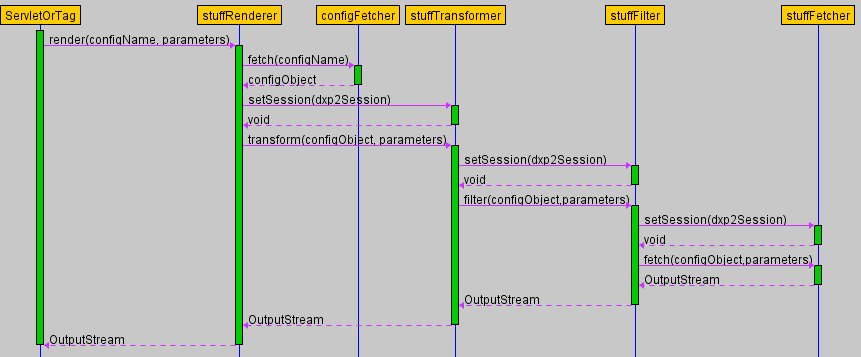J2EE processing pattern
Lance has a good time in Singapore (OK, that thing about running in the morning is on his " learning-the-hard-way" list) 
When discussing Project Blizz we realized, that we needed to discuss execution sequences. While all the modern tools ( MyEclipseIDE, RAD etc.) provide drawing tools, they are not suitable in a discussion where the flow changes rapidly. Nothing can beat a white board there, as long as the team is in one place. Since Nithi had to return to India we had to look for something else. Luckily I found Sequence. This little gem translates pseudo code into sequence diagrams as you type. So instead of fiddling around with layout (I'm not on a Mac), one can just type some lines of text and get a diagram in an instant. Our pattern for processing Domino stuff through the Websphere layer looks like this:
And Sequence turns that into this:

When discussing Project Blizz we realized, that we needed to discuss execution sequences. While all the modern tools ( MyEclipseIDE, RAD etc.) provide drawing tools, they are not suitable in a discussion where the flow changes rapidly. Nothing can beat a white board there, as long as the team is in one place. Since Nithi had to return to India we had to look for something else. Luckily I found Sequence. This little gem translates pseudo code into sequence diagrams as you type. So instead of fiddling around with layout (I'm not on a Mac), one can just type some lines of text and get a diagram in an instant. Our pattern for processing Domino stuff through the Websphere layer looks like this:
ServletOrTag.getResult {
stuffRenderer.render(configName, parameters) -> OutputStream {
configFetcher.fetch(configName) -> configObject;
stuffTransformer.setSession(dxp2Session);
stuffTransformer.transform(configObject, parameters) -> OutputStream {
stuffFilter.setSession(dxp2Session);
stuffFilter.filter(configObject,parameters) -> OutputStream {
stuffFetcher.setSession(dxp2Session);
stuffFetcher.fetch(configObject,parameters) -> OutputStream;
}
}
}
}
And Sequence turns that into this:

Posted by Stephan H Wissel on 16 December 2007 | Comments (0) | categories: IBM Notes Lotus Notes